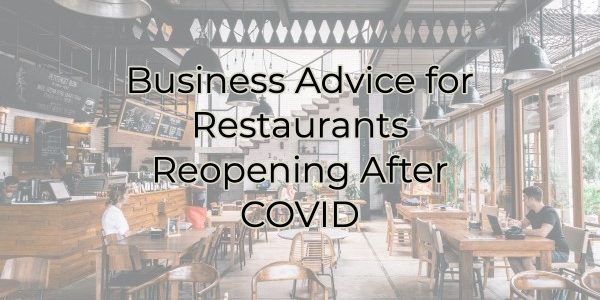
Every few weeks or so the dining regulations are changing as we’re reopening in a phased approach. But “open” isn’t as easy as flipping a switch. There are some things you should keep in mind that will help your customers feel welcome and safe. These things go beyond what a local or county ordinance requires of you. But they’ll go a long way in helping your customers choose you over the competition.
Deal with Wait Times Proactively
If you’re in the restaurant industry, you’ve had to deal with dining room closures, then limited capacity, and eventually a complete reopening at 100% capacity.
If your state has reached 100% capacity, you may be surprised by the crowds. But many people have been waiting anxiously for this moment, including restaurant and bar owners. One waitress reported to me that on Friday night they had 53 parties on the wait list. That leaves the potential for two things that you don’t want: crowding and aggravation.
As great as it is to have the business, if you don’t do something about wait times, your customers may not come back. The crowd is fickle that way. You want to give them great food and a great experience. Three-hour waits are not the way to do that.
Brainstorm ways to handle a large wait time by implementing pagers, playing live music (for entertainment), extending your bar service to waiting areas (law allowing), conducting trivia games in the waiting area, placing benches outside, implementing reservations or call ahead seating, or some other creative way to lessen the danger of a crowd and the frustration behind a long wait.
Use Temporary Menus
It’s something most of us never thought about before COVID, but there are a lot of hands on menus. That’s why many restaurants have switched to one of the following for their menus:
- QR code menus that are accessed through a phone.
- Chalkboard menus posted at each table or visible from each table.
- Disposable paper menus that are thrown away between patrons.
- Laminated menus that are wiped down between customers.
Even at full capacity, it is a good idea to limit touchpoints between patrons.
Condiments
Gone are the tableside containers of ketchup, salt, pepper, sugar, and other condiments. Most restaurants are using disposable single-serve containers. However, wiping down with wipes between patrons accomplishes the same thing with less waste. Make sure customers know this is part of your hygiene practice.
Plan
Before fully opening, walk through your establishment as a customer would. Pay special attention to high traffic area like the hostess desk. Look for ways to minimize congestion like implementing one-way ins and outs. You can use technology to ensure people have a place in line without crowding the hostess platform. Ask people to pay at their tables not at a central cash register.
Create a plan for and checklist of all surfaces your staff and guests will come in contact with. Note especially traveled areas or touchpoints like handrails. Train your staff on cleaning these surfaces. Prepare procedures for elevated cleaning and sanitizing of these surfaces and a schedule to accomplish it efficiently. In the past, cleaning might’ve distracted from the dining experience. Today, it makes people feel safe.
Learn Best Practices
The Small Business Administration and other local business organizations (including the chamber) have a lot of resources for your business. Some even have webinars on best practices related to your industry. They are usually low-cost or free. The CDC also has a special section dedicated to restaurants and bars. It’s beneficial to take the time to learn from them. You can also consult this posting from the Restaurant Association that gives information on each state. You may decide you want to incorporate a best practice from another state in your operation.
While the restaurant industry has faced a lot of changes over the past six months, it’s likely that the way they serve may continue to evolve over the next year. Reaching 100% capacity doesn’t mean a return to normal. You still need to be concerned about infection. One employee or guest could jeopardize your whole operation.
Welcome your new guests but understand open doesn’t mean pre-COVID lifestyles. It’s likely we’ll need to keep up these safety protocols for a while. Whenever possible, showcase your concern for your diners. They’ll reward you with their loyalty.
Christina R. Metcalf (formerly Green) is a marketer who enjoys using the power of story and refuses to believe meaningful copy can be written by bots. She helps chamber and small business professionals find the right words when they don’t have the time or interest to do so.
Christina hates exclamation points and loves road trips. Say hi on Twitter or reach out on Facebook.
